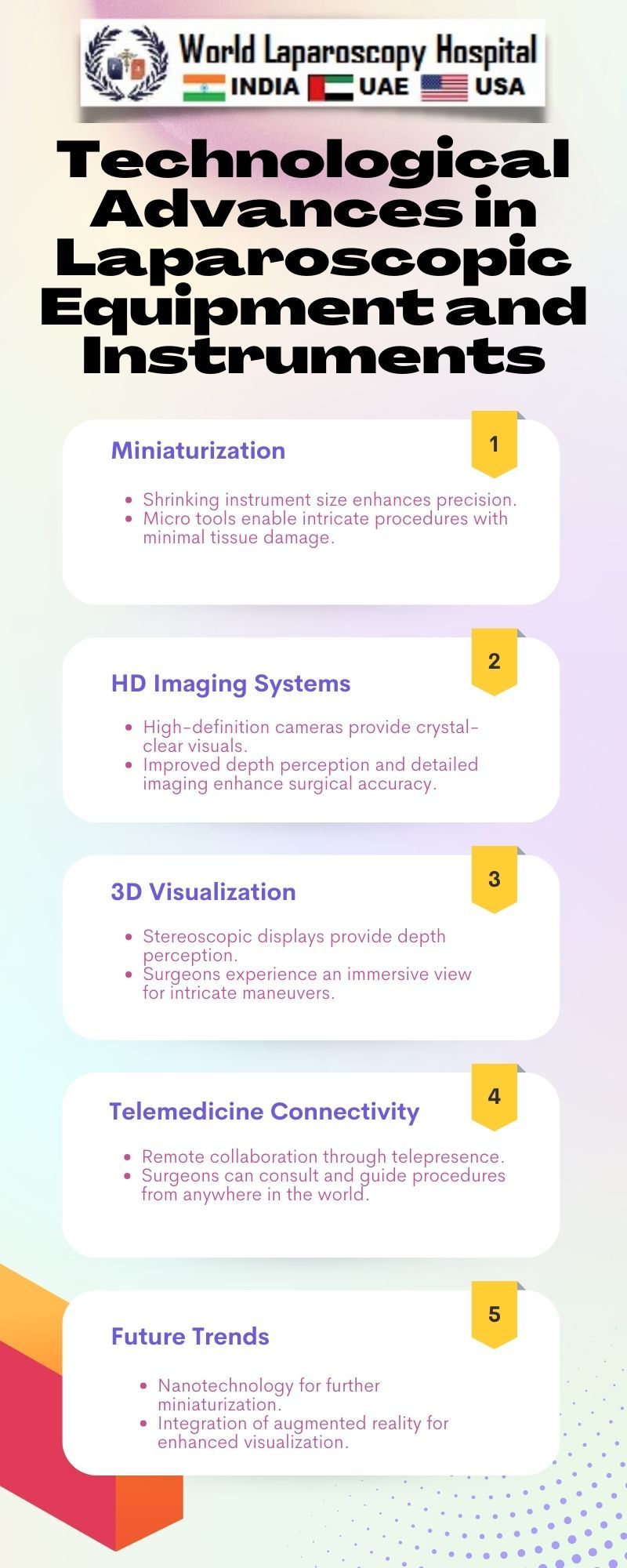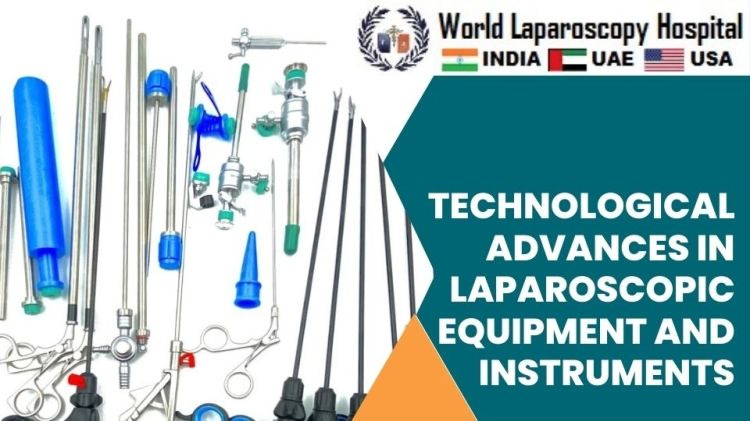Technological Advances in Laparoscopic Equipment and Instrument
Introduction:
Laparoscopic surgery, also known as minimally invasive surgery, has undergone a remarkable evolution in recent years, thanks to continuous advancements in technology. This transformative journey has significantly enhanced the precision, efficiency, and outcomes of surgical procedures, ultimately benefiting patients and healthcare professionals alike. In this article, we'll explore the cutting-edge technological innovations that have revolutionized laparoscopic equipment and instruments.

One of the most notable technological leaps in laparoscopic surgery is the integration of robotics. Robotic-assisted surgery allows surgeons to perform complex procedures with enhanced precision and control. The da Vinci Surgical System, for instance, employs robotic arms controlled by a console, providing a 3D view of the surgical site. Surgeons can manipulate instruments with greater dexterity, leading to reduced trauma and faster recovery for patients.
Enhanced Imaging Technologies:Clear visualization is paramount in laparoscopic surgery, and recent advances in imaging technologies have significantly improved the surgeon's ability to see and navigate within the body. High-definition cameras and 3D imaging systems provide a detailed, immersive view of the surgical field, allowing for better anatomical understanding and more accurate maneuvers. This heightened visual clarity contributes to improved surgical outcomes and a lower risk of complications.
Ergonomic Designs for Surgeon Comfort:Recognizing the physical demands on surgeons during prolonged laparoscopic procedures, there has been a focus on developing instruments with ergonomic designs. Improved handle designs and user-friendly interfaces reduce the strain on surgeons' hands and wrists, enhancing comfort and minimizing fatigue. This not only benefits the surgeon's well-being but also contributes to maintaining a high level of precision throughout the surgery.
Innovations in Instrumentation:Laparoscopic instruments have evolved significantly, driven by innovations in materials and design. For example, the development of articulating instruments allows for more precise movements within the body, mimicking the natural range of motion of a surgeon's hand. Additionally, advancements in energy sources, such as advanced electrosurgical devices and ultrasonic instruments, enable more efficient cutting and coagulation, minimizing blood loss and reducing the overall duration of surgery.
Materials Science in Laparoscopy:Materials used in laparoscopic instruments play a crucial role in their functionality and durability. The shift towards lightweight yet robust materials contributes to reduced physical strain on surgeons and facilitates more delicate maneuvers. Titanium and carbon-fiber-reinforced polymers are increasingly used in instrument construction, providing the necessary strength without compromising on weight.
Integration of Artificial Intelligence (AI):Artificial intelligence is making its mark in various medical fields, and laparoscopic surgery is no exception. AI algorithms can assist surgeons in image analysis, identifying critical structures and anomalies in real-time. This technology offers decision support, helping surgeons make more informed choices during surgery. Additionally, AI can contribute to the automation of routine tasks, freeing up the surgeon's cognitive load for more complex decision-making.
Telepresence and Remote Surgery:Advancements in communication technologies have paved the way for telepresence and remote surgery. Surgeons can now perform laparoscopic procedures from a remote location using robotic systems. This has significant implications for providing surgical expertise in underserved areas or responding to emergencies where immediate access to a skilled surgeon may be challenging. While ethical and regulatory challenges exist, the potential benefits are immense.
Training Simulators and Virtual Reality:The learning curve for laparoscopic surgery can be steep, given the need for precise hand-eye coordination. Training simulators and virtual reality (VR) technologies have emerged to address this challenge. Surgeons can practice and refine their skills in a realistic virtual environment, enhancing their proficiency before performing actual surgeries. This not only improves the learning experience but also contributes to patient safety.
Smart Instruments with Connectivity:The concept of smart instruments involves integrating sensors and connectivity into laparoscopic tools. These instruments can provide real-time feedback to surgeons, such as tissue characteristics, temperature, and pressure. This information enhances decision-making during surgery, allowing for more tailored and precise interventions. Moreover, the data collected can be analyzed for continuous improvement in surgical techniques and outcomes.
Conclusion:
Technological advances in laparoscopic equipment and instruments have propelled minimally invasive surgery into a new era of precision and efficiency. From robotics and enhanced imaging to ergonomic designs and smart instruments, these innovations collectively contribute to improved patient outcomes and a better working environment for surgeons. As technology continues to advance, the future holds the promise of even more sophisticated tools and techniques, further transforming the landscape of laparoscopic surgery. The integration of artificial intelligence, telepresence, and smart instruments hints at a future where surgeries are not only minimally invasive but also more personalized and interconnected than ever before.
